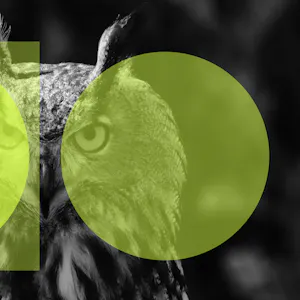Emerging threats

We support organisations striving to build a trustworthy, safe online environment where users can engage authentically in their communities.
Cross-sector corporatesWe support international government organisations and NGOs working to provide infrastructure or improve the capabilities, security and resilience of their nation.
International programmes and developmentWe support commercial organisations operating in a digital world, seeking to protect their reputation and prevent business disruption caused by cyber attacks and compliance breaches.
UK government and public sectorWe support UK government organisations responsible for safeguarding critical infrastructure, preserving public trust, and maintaining national security.



The gig seems to be up for Boris Johnson and Donald Trump. Both men have been politically sidelined for a while now, but with Johnson about to found guilty of lying to the Commons and Trump facing potential jail time for mishandling classified documents, it is looking unlikely that the Teflon Bros. are about to make a comeback. This is good news for the spread of misinformation online.
Both men have recently attempted to rally their bases, by dismissing the charges levelled against them as an establishment stitch-up. In the past, supporters would have rushed to answer this call, furiously typing out their support online or taking to the streets. This time there has been a more muted response, and there were only a small number of protesters outside Trump’s arraignment in Miami yesterday.
At their peak, both men exhibited a gravitational field effect in the online media space. Their unique charisma and unparalleled mendacity helped accelerate misinformation in their respective countries. Trump used his social media platforms to spread narratives of electoral fraud and became a messiah-like figure for the QAnon movement. Likewise, Johnson’s narratives were supported by right wing influencers and digital-facing media organisations such as GB News and Guido Fawkes. Johnson himself also played into online paedophilia conspiracies by attempting to implicate his opposite Keir Starmer in the Jimmy Savile scandal; comments which led to a mob harassing the Labour leader with chants of ‘traitor’ and accusations of protecting child abusers.
When discussing the root causes of misinformation, we often think in terms of inauthentic activity, shady media or PR groups and the social grievances that give rise to a demand for ‘alternative facts’. However, in history, there is an idea called the ‘great figure’ theory. This highlights the role that specific individuals can play in shaping historical events, and I think we can apply this to the online environment. We might call such people High Threat-worth Individuals.
Despite being a billionaire and an aristocrat, both Trump and Johnson had the unique skill their political peers seemed to lack. This was the ability to recast themselves as political outsiders and win over a loyal following of true believers, namely among the old, white, male, and disenfranchised. They were able to win credibility in ways that made their lies believable. They animated supporters who in turn amplified their statements online. For instance, research found that Trump’s suspension from multiple social media platforms after the January 6 riots led to a marked reduction in misinformation.
I think there is a lot more to learn more about such High Threat-worth Individuals. They understand how to game the online attention economy like no one else. We should understand how they play with the boundaries of disinformation through their language or ignore these entirely through use of their position and by inciting their followers.
Both Trump and Johnson have left a legacy in the movements they inspired. This will continue to develop as they become confined to the political margins. We should study their example and the role they played in the spread of digital myth and vitriol. Many imitators are struggling to recapture what they achieved, but someone will be successful, and we better be ready.
More about Protection Group International's Digital Investigations
Our Digital Investigations Analysts combine modern exploitative technology with deep human analytical expertise that covers the social media platforms themselves and the behaviours and the intents of those who use them. Our experienced analyst team have a deep understanding of how various threat groups use social media and follow a three-pronged approach focused on content, behaviour and infrastructure to assess and substantiate threat landscapes.
Disclaimer: Protection Group International does not endorse any of the linked content.

At their core, artificial systems are a series of relationships between intelligence, truth, and decision making.

Feeding the name of a new criminal to the online OSINT community is like waving a red rag to a bull. There’s an immediate scramble to be the first to find every piece of information out there on the target, and present it back in a nice network graph (bonus points if you’re using your own network graph product and the whole thing is a thinly veiled advert for why your Ghunt code wrap with its purple-backlit-round-edged-dynamic-element CSS is better than everyone else’s).

There is a tendency to think that modern problems require modern solutions. Got a problem with AI-generated content? Your only hope is to build an AI-powered detection engine.